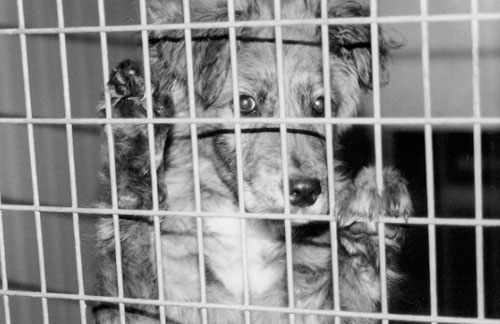FARM ANIMAL BEHAVIOUR

Think of animal behaviour and we tend to picture cute cats and dogs or loveable budgies and bunnies, not farm animals. Ask a young city-living child where milk comes from and he will answer “ a supermarket”! Perhaps it’s time we learnt a little about those animals who provide us with so many of our daily needs – dairy produce, wool, meat and so on.
All young animals are cute and cuddly and foals, lambs, piglets, calves and kids (baby goats) are no exception. It is at this age that these animals need exposure to human contact if they are to be easy to manage in the future. Unpleasant experiences at this stage of life, however, can result in a lifelong fear of handling. Understanding the animals’ behavioural needs results in animals that are not only easier to work with but may also lead to increased productivity.

Most of our farmed species of animals live in groups that we call herds, flocks or packs. Group living has advantages for animals in the wild as there is safety in numbers and our domesticated animals still retain the need to live within a group structure. Many get extremely restless when separated from the rest of their group.
These groups will normally have a leader and this can be used to the handler’s advantage when working with farm animals. If we can move the leading cow, for instance, all the others will follow.
When some individuals become a little too confident for humans to handle, it is important for handlers to become the leaders. Goats will often challenge their human owners for leadership, making them difficult to work with. Effective leadership will make this relationship more manageable.
It is important to treat farm animals gently as they can suffer stress, which not only makes them more difficult to handle but also decreases productivity by lowering milk supplies or causing bruising in meat. Simple things such as providing even lighting when encouraging animals into transport or being careful not to make loud, frightening noises can reduce the amount of fear that animals experience. Approaching animals where they can see you coming (usually from the side) will prevent startling behaviour. Even talking gently rather than shouting is preferred by many animals.

Some people forego the usual pet moggies and mutts to look after pot bellied pigs or miniature horses in their homes and, of course, many children have the pleasure of owning or at least regularly riding horses and ponies. Unfortunately, animal shelters are also the recipients of these animals when they grow “too large” or become “too difficult” to handle. It is important that we think carefully before owning any pet and that we learn all we can about these animals and their behaviour if we are to live in harmony and safety.
Animal behaviour and welfare are inevitably linked and it is important that we humans look after all our domestic animals, whether they live in the farmyard or within our homes.
This article by Dr Joanne Righetti was written and first produced in The Pet Directory
Keeping chickens as backyard pets







Comments are closed.